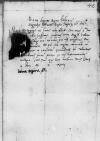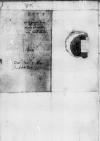Letter #198
Bona Sforza to Ioannes DANTISCUSCracow (Kraków), 1524-05-03
| received Bari, [1524]-06-03 Manuscript sources:
| ||||||
Text & apparatus & commentary Plain text Text & commentary Text & apparatus
[Magnifico] et egregio viro ... nuntio et oratori ... nostro sincere dilecto
Magnifice et egregie vir sincere nobis dilecte.
Non miretur Strenuitas Tua
... eidem scripsimus. Commisimus enim magnifico
Quae bene valeat.
Datae

